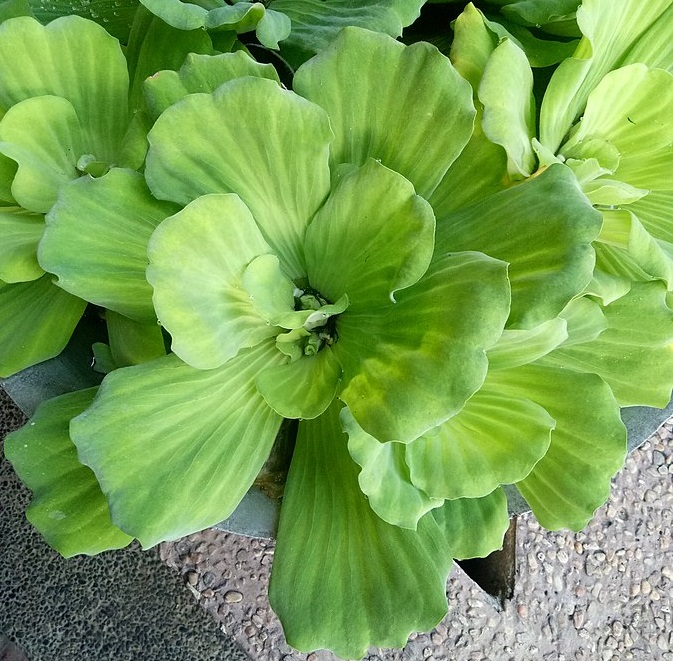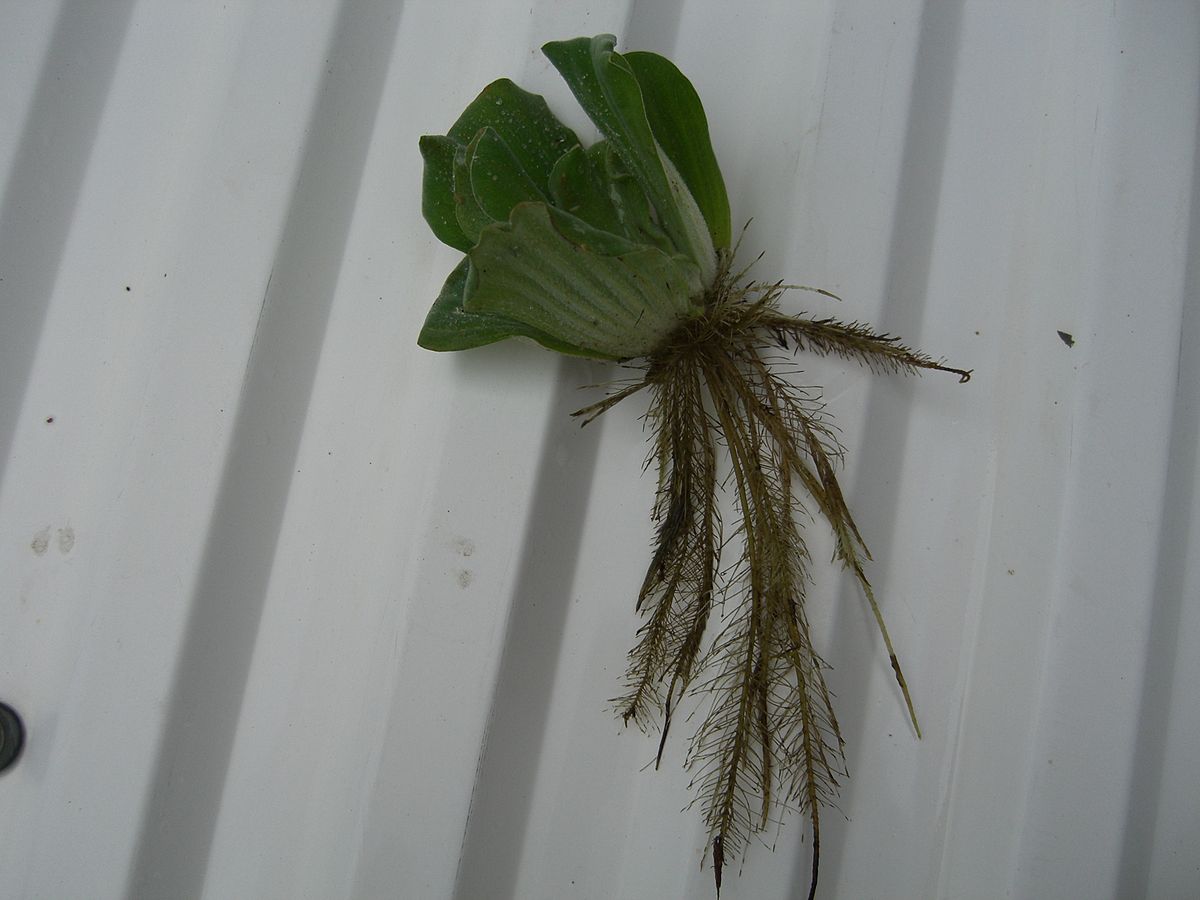Water Lettuce

Water Lettuce
(Pistia stratiotes)
Priority: - Prevent / EDRR
Tags: Aquatic | EDRR
Identification and Reproduction
Identification:
- Water lettuce is an aquatic plant that floats above the surface of the water with roots hanging submerged in the water.
- This plant does not have a stem, rather leaves are gathered in a rosette.
- Rosettes are about 10 cm wide and 6 cm tall.
- Leaves are light green, soft, succulent, wavy margins with parallel running veins and can reach up to 14cm in length.
- Flowers are found in the middle of the rosette.
- Roots hang below and appear feathery.
Reproduction:
- Water lettuce can reproduce from seeds or vegetatively.
- It will produce clones from short, brittle stolons.
- Stolons can spread up to 60 cm in length.
Habitat & Ecology
- This plant is the most productive freshwater aquatic plant in the world.
- Often regarded as a free-floating aquatic plant, water lettuce can still survive in moist soil.
- It is sensitive to frost and is often restricted to tropical and sub-tropical regions.
- It thrives in waters that are high in nutrient content, notably waters that are contaminated with sewage or fertilizers.
Impacts
Social:
- Can block irrigation canals and reservoirs.
- Dense mats can clog hydro-electricity turbines and halt energy production.
Ecological:
- Dense mats will alter the hydrological properties of ecosystems.
- In extreme cases water lettuce can grow over the waterbody and block any gas exchange at the air-water interface. This reduces oxygen levels in the water and will kill fish and other organisms.
- Large infestations will also out-shade native aquatic species.
- Provide a good breeding habitat for mosquitoes. Eggs are laid under the leaves and larvae attach to the plant roots.
Management
Prevention is a high priority for this plant.
- Do not plant or purchase this plant to put in your pond or water garden.
- Never release unwanted plants into natural waterbodies.
- Learn to identify this plant and avoid traveling infested sites.
- Always clean, drain, and dry aquatic equipment like boats or canoes before transferring from one body of water to another.
- Please report any suspected water lettuce populations.
Resources
For more details check out the Invasive Species Compendium datasheet on Pistia stratiotes (water lettuce).
Find out more information in the NAISMA Water Lettuce Factsheet.
Header photo (Σ64).




